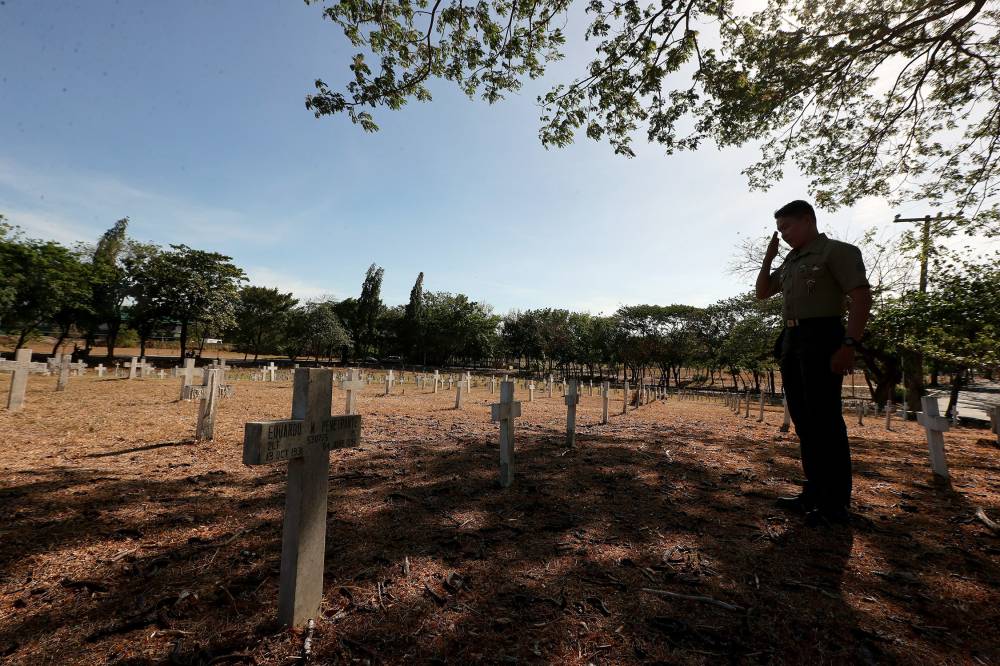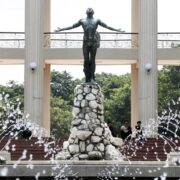The better part of valor

There aren’t many living Filipinos left who lived through the events we remember today, Araw ng Kagitingan (Day of Valor), a holiday to celebrate the bravery of resistance forces during and after the Battle of Bataan that culminated in the infamous Death March.
Upon laying down their arms on April 9, 1942, tens of thousands of Filipino and American prisoners of war were herded by the Japanese from their last bastion in Mariveles, Bataan, to San Fernando, Pampanga, and then to Capas, Tarlac, by box train. Of 60,000 Filipinos and 15,000 Americans who made the tortuous 128-kilometer trek, only 54,000 would reach their destination. Many perished from exhaustion, illness, or starvation, while the rest were wantonly killed by their captors.
Shot or bayonetedOne account by the United States Army read in part: “As the emaciated men proceeded north up the highway in the blistering heat, the Japanese guards summarily shot or bayoneted any man who fell, attempted to escape, or stopped to quench his thirst at a roadside spigot or puddle. The men were given little water or food for the entire length of the Bataan Death March, which took about five days for each group to complete.”
For decades, the holiday had been called “Bataan Day,” until it was changed in the 1980s to its present name, punctuating neither defeat nor surrender in the “Fall of Bataan” but the courage and sacrifice of the men who fought nobly against a superior enemy.
Although the war veterans who survived that dark period are now a vanishing breed, their heroism lives on, not only in our remembrance but in the nation’s unceasing resolve to defend its sovereignty from threats. Within these old soldiers lies the same valiant spirit that is present, still, in the Filipinos of today who are waging a different kind of battle against a different kind of adversary in the tension-filled waters of the West Philippine Sea, now a flash point of conflict in the region.
Water cannon attackLike the wartime invaders, China has been hostile, provocative and, at times, brutal in obstructing the maritime movements of the Philippine Coast Guard (PCG) and the Armed Forces of the Philippines, through the Philippine Navy.
One such incident occurred on March 23 when China Coast Guard ships blasted water cannons at the Unaizah May 4 (UM4), a Philippine-commissioned vessel on a resupply mission to the BRP Sierra Madre, a grounded warship that serves as the country’s remote outpost in Ayungin (Second Thomas) Shoal.
The UM4 sustained heavy damage while three members of its crew were hurt in the water cannon attack, demonstrating once more Beijing’s willingness to use violence to get its way.
Two days after this event, President Marcos signed Executive Order No. 57, seeking to “strengthen the Philippines’ maritime security and maritime domain awareness” with the creation of the National Maritime Council.
It must be noted that last month’s escalation was only one of many, as other Philippine rotation and resupply (Rore) missions had weathered similar attacks from the Chinese over the past several months and years.
Chinese propagandaBut as Defense Secretary Gilberto Teodoro Jr. pointed out, pro-China propagandists had been busy trying to divert attention away from these “illegal activities,” instead harping on the so-called gentleman’s deal between Manila and Beijing on the conduct of the Ayungin missions, as former president Rodrigo Duterte’s ex-spokesperson Harry Roque claimed recently.
“Let us not fall into the trap set by Chinese propaganda of refocusing the debate on a so-called promise while deflecting attention away from China’s government, thereby freeing and allowing them to continue with their illegal activities in our EEZ,” Teodoro said, referring to the country’s 370-kilometer exclusive economic zone.
The defense chief is right. The Philippines must ignore such distractions from spin doctors, Chinese or otherwise, and direct its energies instead toward reinforcing our stouthearted Navy and PCG personnel who stand on the front lines of this burgeoning conflict.
Coalition with like-minded alliesNeither must we wait for any crew member on Rore trips to be martyred by China’s actions in sea clashes. Keeping each of them safe and alive must be our tallest priority.
That will require both building and perfecting our defenses, fortified by the coalition with like-minded allies such as the United States and our former nemesis, Japan, to protect Filipinos on life-threatening expeditions to disputed waters, including and especially, the Sierra Madre, now a symbol of Philippine grit and tenacity in the high seas, much like our troops’ last stand in Bataan 82 years ago.
But as daring and gallant as our soldiers and coast guards are today in standing up to China, the government, too, must learn to counter naked aggression with prudence and cunning, for it has been said, in matters of war and diplomacy, the better part of valor is discretion.
















